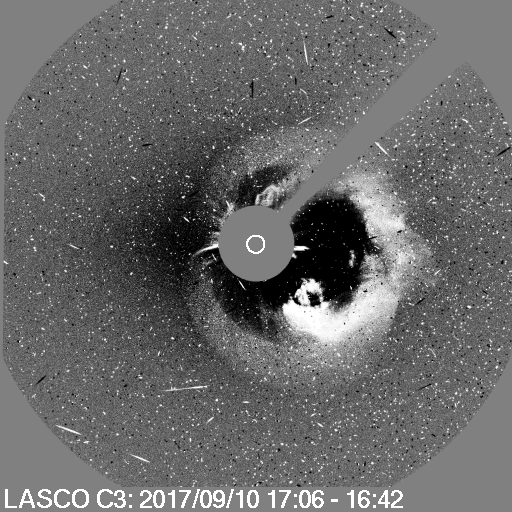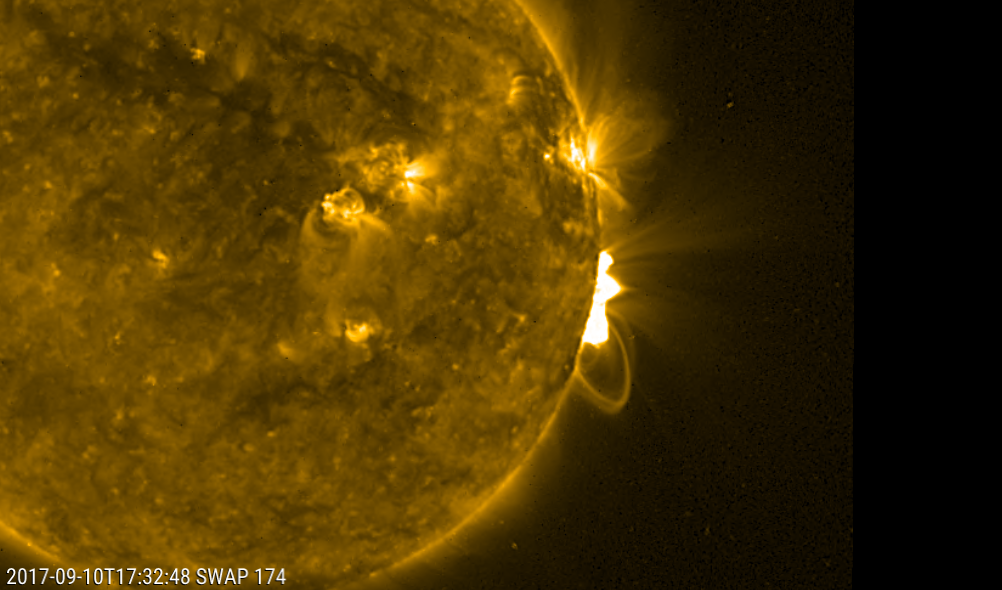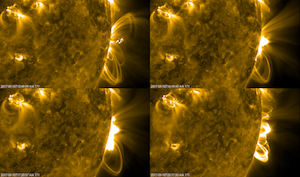The sunspot group that caused the space weather trouble in the previous days is still in a furious mood. On September 10, 16:06 UT it produced an X8.9 light flash - an extreme flare.
At the same time, a plasma cloud was blown into space with a speed of probably more than 2500 km/s. For comparison, the speed of the cloud that left the Sun on September 6 was around 1100-1200 km/s. Since this cloud is ejected not fully in the direction of the Earth, we will experience a glancing blow from it. Nevertheless, the plasma cloud will cause a geomagnetic storm. How strong? We will see. The SIDC forecast centre expects it tomorrow, September 12, first part of the UT day!

This is what the cloud looks like in difference images of the articificial eclipse maker LASCO onboard of the spacecraft SOHO. It is a difference image: two images at a different time are substracted to highlight what has changed in the meantime. LASCO shows you the space environment close to the Sun.
More proof that the Sun is hot-tempered these days? Next to the light and mass solar storms, the Sun threw a particle storm into our direction. The dots in the image above are those particles when they hit the telescope LASCO. The particles follow the magnetic highways towards the south or north pole of the Earth where they can penetrate our atmosphere. The energy of these particles was in this case so high that they caused a Ground Level Event. A GLE occurs when at the Earth's surface an increased level of radiation is measured. At least 5 stations reported a GLE. The reporting stations are located at a high latitude, for example in Oulu, Finland *. Dourbes, Belgium didn't measure a GLE. A GLE is exceptional. Luckily this GLE is a small event as it adds only a little extra to the usual radiation dose on for example transpolar flights.
* A graph made with data from the Neutron Monitor Data Base.







